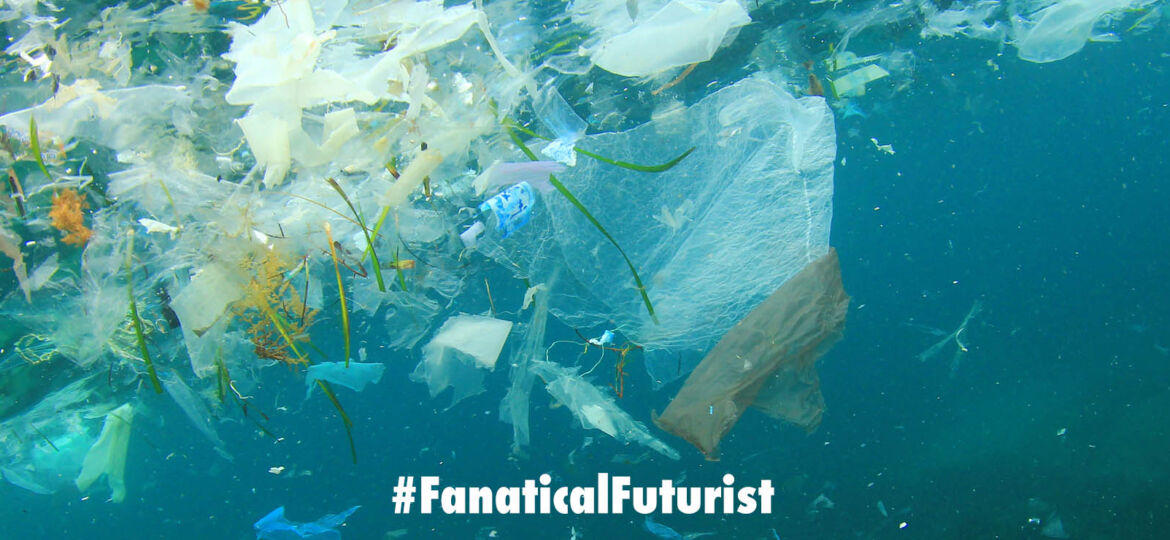
WHY THIS MATTERS IN BRIEF
There are lots of ways to create carbon neutral fuels, and this is another example of one that solves two problems at once…
 Love the Exponential Future? Join our XPotential Community, future proof yourself with courses from XPotential University, read about exponential tech and trends, connect, watch a keynote, or browse my blog.
Love the Exponential Future? Join our XPotential Community, future proof yourself with courses from XPotential University, read about exponential tech and trends, connect, watch a keynote, or browse my blog.
Having now reached the deepest parts of the ocean, the plastic pollution problem is calling for some creative solutions. Plastic-eating bacteria or edible alternatives could help, as could recycling the mess into shoes, hardier polymers or even Panama’s Plastic Bottle Village. Now, an organic chemist and a sailor are trying to make that waste worth collecting, by turning it into a usable diesel fuel through a semi-portable reactor.
While plenty of plastics are technically recyclable, processing them isn’t entirely green, as caustic chemicals and toxic by-products are the norm. To try to clean up that act, a team from UC Irvine and the Shanghai Institute of Organic Chemistry last year demonstrated a method called cross-alkane metathesis, which breaks the plastics down into reusable waxes and oils without churning out more pollutants and undoing all its hard work.
The team behind the new reactor has similar goals in mind. It harnesses the process of pyrolosis – applying heat to “cook” material in an oxygen-less environment – to break the plastic down into a hydrocarbon fuel similar to diesel. This technique is currently being explored by companies like Cynar as a method of both producing cleaner fuels and reducing the waste that ends up in landfills and oceans.
But rather than setting up shop in a large-scale facility, the researchers have shrunk the process down into a mobile system that could fit and run on the back of a truck or on a ship. The operating temperatures are also lower, running at between 350º and 380º C (662º to 716º F), which is, according to the team, far cooler than the usual range of 450º C to 600º C (842º to 1,112º F).
This reactor turns plastic into fuel
That severe shrinkage, in both size and temperature, is possible due to the process using a “catalyzed pyrolosis.” The team uses a metallocene catalyst deposited on a porous support structure to control the reaction, which breaks down the plastic quickly into a fuel that’s reportedly pure enough to be used without extra refinement.
“The catalyst system also allows us to perform the pyrolysis as a continuous-feed process and shrink the footprint of the whole system,” says Swaminathan Ramesh, an organic chemist with 23 years at BASF under his belt. “We can scale the capacity to handle anywhere from 200 pounds (91 kg) per 10 hour day to 10,000 (4,536 kg) or more pounds per 10 hour day. Because of its small size, we also can take the technological process to where the plastic wastes are.”
If it sounds too good to be true, unfortunately it probably is, in a practical sense. The amount of plastic collected from the ocean would need to be balanced with the fuel expended in the process, and just skimming the surface might not catch enough to make a dent in the problem.
Worse, the team admits that, for now, its process only works with certain types of plastic, meaning it would need to be sorted before being fed into the reactor, while the unburnable garbage needs to be transported. But according to the researchers, nature would do most of that sorting for them, since the plastic waste that can’t be pyrolyzed would sink.
“The types of plastic that float are the types of plastic that are actually good candidates for this process,” say James Holm, a veteran sailor of 40 years (around the 14:40 mark in the video below). “That does not include the classic water bottle, the PETE, in that case we would have to just store that, or nylons or PVCs. But nylons and PVCs don’t float.”
Whether or not taking it on a ship is a practical solution to the plastic waste problem (or at least part of a solution), the researchers believe their reactor could better serve the environment in land-based recycling facilities. By giving plastic waste a street value, people might be more inclined to turn in their old bottles and reduce the amount that ends up in the oceans in the first place.
Holm and Ramesh presented their reactor at the National Meeting and Exposition of the American Chemical Society this week, and a video of their original discussion about the technology can be seen above.
Source: American Chemical Society















